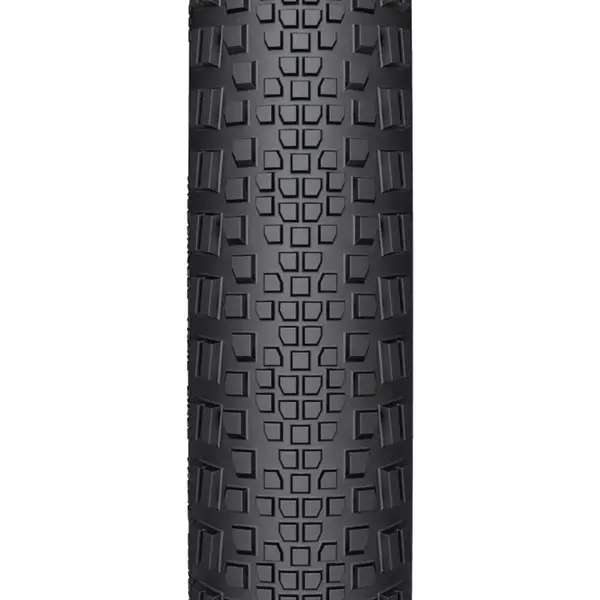2manyoranges
Old School Grand Master
- Feedback
- View
Well....I do like to mess around with tyres and see what's works and what doesn't. And pressures.
Recently, I terrified myself by trying to run stupidly low pressures to find that you get MASSIVE GRIP......NO GRIP!!! as the tyre collapses sideways in a tight berm. Very Frightening. So I upped the pressure slowly until the sudden collapse stopped - and that was a great sweet spot. For me at 135lbs-ish on the rear that was about 20 and the front about 25. That's with tubeless 2.35 Specialized Butcher (stupid name) and 2.35 Hans Dampf on the front.
Technique wise it is of course all about digging in the side knobs, which means leaning the bike not the body - which gives excessive lean to the bike and really digs those knobs in - and requires deliberate front weighting of the bike. Body upright, lean the bike. Nice. Very grippy.
Then this week I did a few runs to work on my second Roadrat (the rain-focussed one with mudguards) and found something Interesting. The orange Rat has 45C WTB Riddlers on in - nice cheese grater pattern close knob lets down the centre of the tyre and much bigger side knobs. I can lean that pretty dramatically at speed on tarmac but it's always felt a bit squirmy - mainly because the clearances are very tight on the frame, and since I am using 23mm internal rims, the tyre balloon a little at 50-60psi. So the tyres are running a little low re pressure and getting the bike onto the side knobs actually is quite a transition, which results in a very unconfident transition from the centre tread to the side tread. Effect = dodgy handling when leaning.

But the grey Rain-Roadrat has 19mm internal with 35C Schwalbe G-ones - which have a tiny onZa like set of round knobs. But the Good Thing is that the carcass expands at 50-60psi into a really rounded shape - and with consistent types of knobs all over the tyre, there's no weird transition to different sorts of knobs when leaning. This gives immense and consistent grip and so great confidence when really pushing the bike round a tarmac curve. They are really great-performing gravel tyres on the road. On loose gravel they are so so, and cornering or climbing on loose stuff or slop is poor compared with something like a WTB Raddler. But the G-omes are just great for summer and winter commuting on dodgy cycling paths and city streets.

Recently, I terrified myself by trying to run stupidly low pressures to find that you get MASSIVE GRIP......NO GRIP!!! as the tyre collapses sideways in a tight berm. Very Frightening. So I upped the pressure slowly until the sudden collapse stopped - and that was a great sweet spot. For me at 135lbs-ish on the rear that was about 20 and the front about 25. That's with tubeless 2.35 Specialized Butcher (stupid name) and 2.35 Hans Dampf on the front.
Technique wise it is of course all about digging in the side knobs, which means leaning the bike not the body - which gives excessive lean to the bike and really digs those knobs in - and requires deliberate front weighting of the bike. Body upright, lean the bike. Nice. Very grippy.
Then this week I did a few runs to work on my second Roadrat (the rain-focussed one with mudguards) and found something Interesting. The orange Rat has 45C WTB Riddlers on in - nice cheese grater pattern close knob lets down the centre of the tyre and much bigger side knobs. I can lean that pretty dramatically at speed on tarmac but it's always felt a bit squirmy - mainly because the clearances are very tight on the frame, and since I am using 23mm internal rims, the tyre balloon a little at 50-60psi. So the tyres are running a little low re pressure and getting the bike onto the side knobs actually is quite a transition, which results in a very unconfident transition from the centre tread to the side tread. Effect = dodgy handling when leaning.

But the grey Rain-Roadrat has 19mm internal with 35C Schwalbe G-ones - which have a tiny onZa like set of round knobs. But the Good Thing is that the carcass expands at 50-60psi into a really rounded shape - and with consistent types of knobs all over the tyre, there's no weird transition to different sorts of knobs when leaning. This gives immense and consistent grip and so great confidence when really pushing the bike round a tarmac curve. They are really great-performing gravel tyres on the road. On loose gravel they are so so, and cornering or climbing on loose stuff or slop is poor compared with something like a WTB Raddler. But the G-omes are just great for summer and winter commuting on dodgy cycling paths and city streets.

Last edited: